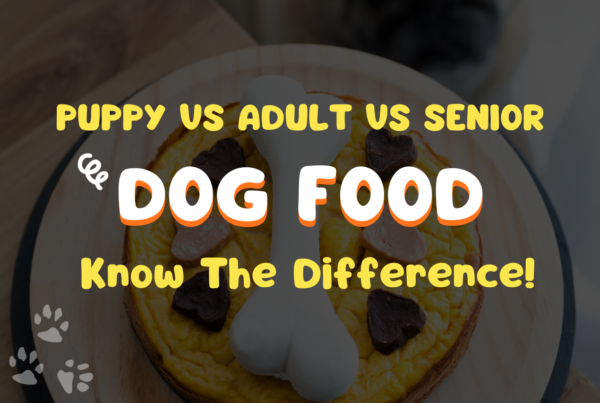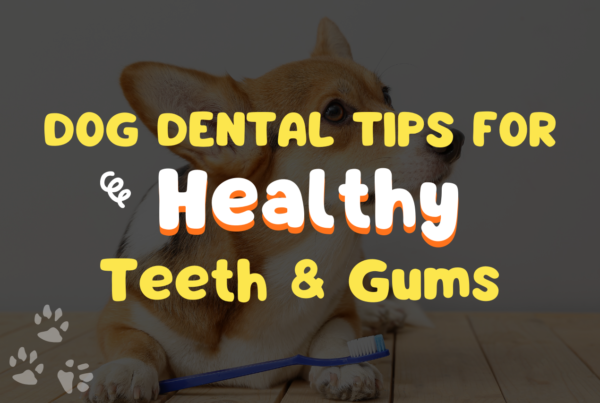
What are those distracting, brown-reddish marks under, or at the side of your dog’s eyes? What are these marks and where do they come from?
Those are dog tear stains.
How Do I Remove Tear Stains On My Dog? Tear stains may appear more in some breeds and especially dogs with a white coat. Tearing does happen to dogs and some of these may be indicators of other health issues. These tear stains are caused by excessive tear production known as epiphora which literally translates to “watery eyes”. The tears normally drain itself through small holes called puncta, into the lacrimal sac and then into the nasolacrimal duct where it then empties through the nose.
Epiphora usually happens when the nasolacrimal duct gets blocked up and the tears flow out through the eyes instead. In a nutshell, its a similar situation just like the air-conditioning leaks when a pipeline gets clogged up.
For some breeds, epiphora becomes an issue when the nasolacrimal duct does not develop properly, making epiphora a chronic condition.
So what breeds are more susceptible to developing epiphora?
Some of the breeds that are prone to developing epiphora are:
- Shih Tzu
- Maltese
- West Highland White Terriers
- Toy Poodles
- Bichons Frises
- Lhasa Apsos
Epiphora is more common in these breeds of small dogs as they have long hairs on their faces and have tiny hairs in the inner aspect of the eyelid margin. What these tiny hairs do is that they absorb the tears and moisture from the eyes resulting in these stains. In some dogs, shallow eye sockets just simply allow the tears to drop or flow to the surrounding facial hair instead.
But wait, wasn’t it mentioned that epiphora could be an indicator of other health issues in dogs?
Yes, there is a possibility that epiphora is a symptom of other issues. Excessive tear production could be an indication of other issues such as:
- Ingrown eyelashes
- Corneal ulcerations
- Teething problems (in puppies)
- Ear infections
- pH imbalance
- Bacterial infections
- Side effect of medication
Bacterial infections in particular, could come from the use of plastic food or water bowls. If not sanitized properly, these dog dishes would promote bacterial growth.
If you’re looking at a fix of removing those stains that keep appearing, read on!
Switching tap water to filtered water.
The sediment and minerals found in tap water can make the stains worse. You can add a filtration system or give your dog filtered water for a change. This helps remove most of the contaminants and harmful toxic substances such as chlorine.
Some of these tear stains that appear more brownish than the usual rusty shade of red could indicate a yeast infection. You can be almost certain if it is, when it smells.
Using Apple Cider Vinegar
What you can do, is that you could switch the plastic dishes to stainless steel ones. Add a teaspoon of apple cider vinegar to your dog’s drinking water so that it acidifies your dog’s drinking water. This will help remove yeast from your dog’s system. This is not an instant fix and will take a bit of time. After a while, you should notice some reduced staining.
The general guide is to use 1 teaspoon to 1 tablespoon per 50 pounds of your dog’s body weight. Start of with really small amounts during the first try to see how your dog reacts to the apple cider vinegar.
Milk of Magnesia rubbing paste.
Mix equal parts milk of magnesia and hydrogen peroxide in a bowl, and add some cornstarch to make a paste. Rub the paste into the tear-stained area and set it for about four hours before thoroughly rubbing it on the area and washing it off. Before you apply the paste, it is recommended that you put on the pet cone/ buster or E-collar on, so that your dog does not rub it off when setting the paste. You should take care not to get it on the dog’s eyes.
Additional grooming.
Some additional grooming around the dog’s face may be beneficial in reducing tear staining. One such measure you can take is to trim the hairs around your dog’s eyes. This would be particularly useful in removing those older, darker and crustier stains.
What you can do for some added safety, is to take your dog to a professional groomer. Especially with dogs with shallow eye sockets. You wouldn’t want to injure your furry friend when it twitches while you’re trimming the hair around the eyes.
Alternatively, there are commercial products out there that specifically target stain removal. These come in the form of brightening solutions and cleaning wipes. These could be used regularly, but will work best when proper daily care such as trimming the affected areas are carried out.
Do seek the advice of your veterinarian to check out once in a while on your dog’s general health, or before using a solution which you are not familiar with. They will be able to guide you in setting an effective program in managing epiphoria and taking appropriate steps in reducing the tear staining. Remember, a healthy pet is a happy pet!






